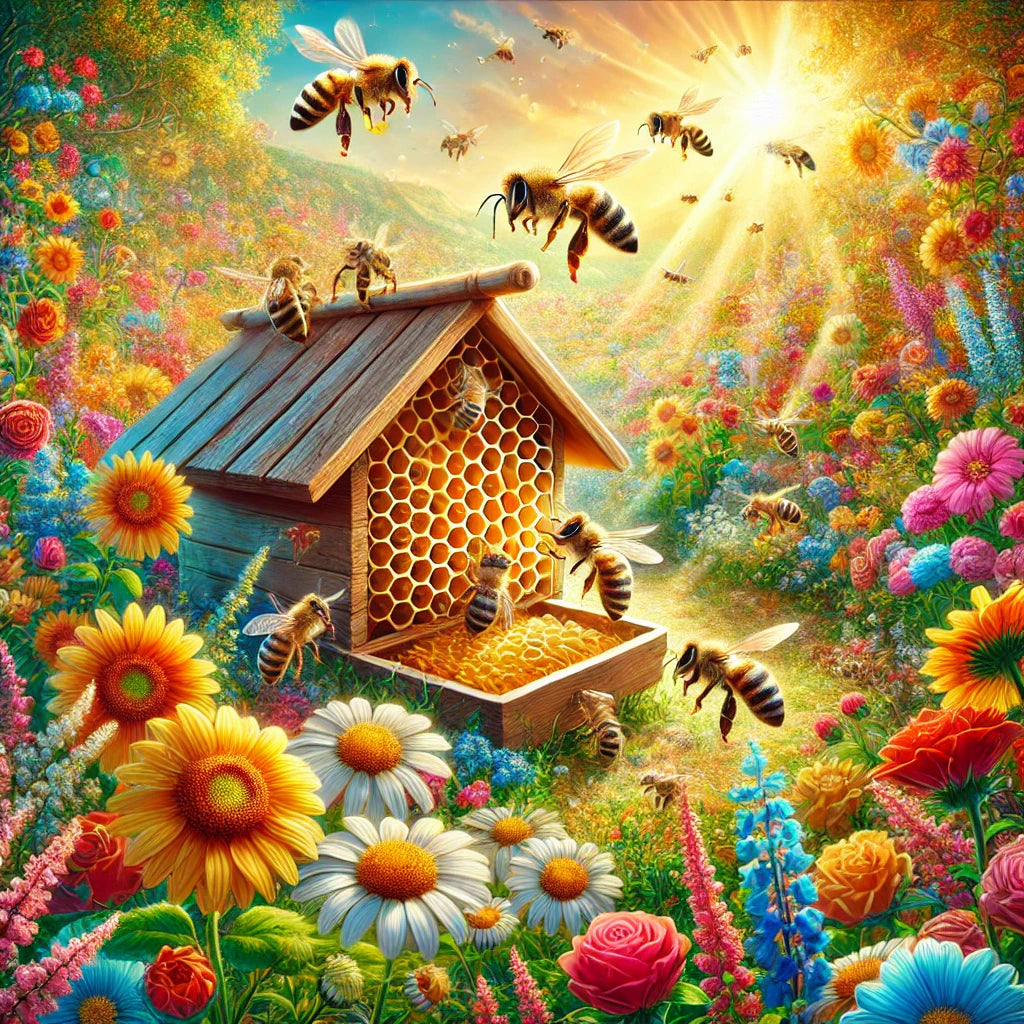Honey bees are fascinating creatures that rely on nectar collection to produce honey, a key food source for the hive. Nectar is gathered from flowering plants and stored in the honey stomach of the bee. Once the bee returns to the hive,
it passes the nectar to other bees, who process it and store it in a honeycomb. Here’s how it all happens and how you can help encourage nectar collection in your own backyard!
How Do Bees Collect Nectar?
Bees use their long, tube-like tongues to extract nectar from flowers, storing it temporarily in their honey stomach. Once full, they return to the hive, passing the nectar to worker bees. These worker bees then deposit the nectar into the honeycomb cells. Through a process of evaporation and enzymatic activity, nectar turns into honey over time.
Understanding the life cycle of bees and how they interact with flowering plants is critical for beekeepers looking to optimize their honey production.
Why Is Nectar So Important for Bees?
Nectar provides the essential carbohydrates that bees need to fuel their day-to-day activities. Honey, made from stored nectar, sustains the hive through colder months when flowers are no longer in bloom. Without nectar, bees would not have the resources necessary for honey production or their continued survival. For anyone looking to improve bee health, learning how to attract pollinators to your vegetable garden is a key step.
How to Support Nectar Collection in Your Garden
If you’re a gardener or a beekeeper, you can encourage nectar collection by planting a variety of flowering plants that bloom at different times of the year. Not only does this keep your garden vibrant, but it also supports bees throughout their entire season.
- Plant flowers such as lavender, clover, and wildflowers, which bees favor.
- Use bee trap attractants strategically to guide bees to specific areas.
- Ensure good hive conditions by managing pests with beetle traps for beehives.
How to Start a Bee Farm
For beginners looking to dive into beekeeping, starting a bee farm starts with understanding the basics of hive setup and bee behavior. The initial steps, from choosing the right location for your hive to selecting honey bee swarms to start your colony, are crucial to success.
Frequently Asked Questions About Bees and Nectar
Q1. What is the role of nectar in honey production?
Nectar is essential to bees, as they process it into honey, providing their main source of energy and survival during colder months.
Q2. How do bees collect nectar?
Bees use their tongues to suck up nectar from flowers, storing it in their honey stomach before returning it to the hive.
Q3. How can I attract more bees to my garden?
Plant nectar-rich flowers like lavender, clover, and wildflowers. You can also use bee trap attractants to encourage bees to visit specific areas.
Q4. What tools help maintain a healthy hive?
Tools such as beetle traps and Swarm Commander products help protect and maintain a healthy hive environment.
Q5. Why are honey bees vital to agriculture?
Honey bees are essential pollinators that contribute to the success of many crops, playing a crucial role in agriculture.
Boost Nectar Collection Efficiency with Swarm Commander!
Nectar collection is a fundamental process in the survival of bees and the production of honey. By planting nectar-rich flowers, using the right tools, and understanding bee behavior, you can support healthy honey production and attract more pollinators to your garden. Beekeeping is both a rewarding and crucial practice for preserving bee populations and ensuring their role in agriculture.
Maximize the nectar collection process of your honey bees with Swarm Commander's innovative products. From bee trap attractants to tools for optimal hive management, ensure your bees can collect and store nectar efficiently. Visit Swarm Commander to explore solutions that will help your colony thrive!



